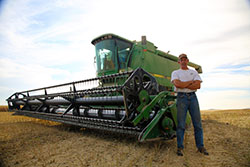|
Improving Agricultural Economics with a change in
rotation.
Raising a crop that has demand.
In the United States, Winter Wheat producers must overcome wind and
water erosion in their production areas.
About 90% of the erosion in the PNW is coming from Winter Wheat
Production.
Many producers just donít understand where the problem is coming
from.
The plant breeders and engineers have found a solution.
It is often difficult to get a good stand. Moisture is always a
problem, too much or too little.
Is the Winter Wheat crop genetically prone to not compete in the
environment?
Is the Winter Wheat not vigorous enough to out compete the
elements?
Perennial wheat would really help.
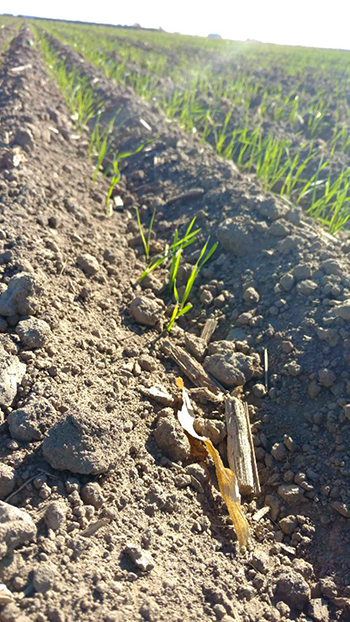
A poor stand and seeding very deep results in Wind Erosion at
Hugoton, KS.
This is the heart of the Great Plains Dust Bowl of the Dirty
Thirties. The good topsoil is gone.

Deep seeding for moisture in deep furrow tillage system. A good
waste of soil every time. This techniques goes back more than 100
plus years.
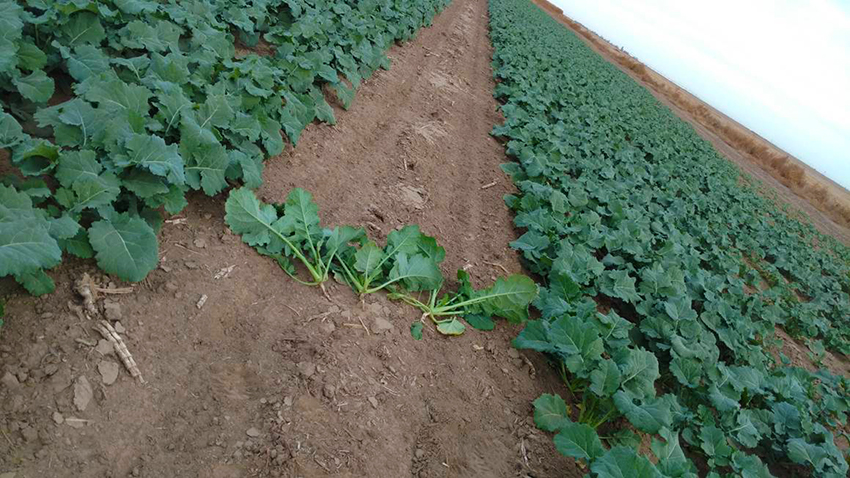
Planted at 1 inch depth without water injection on a Chemfallow
system at Hugoton.
Seed Row Saturation or water injection will allow for 99% stands in
4 days at 90 degrees F planting temperatures.
The naked city is exposed with a need for seed.
The cover of the cropland will dead stop wind erosion in SW Kansas.
A good stand of Canola on 20 inch spacing with a planter. Winter
wheat fields that adjoin this field did not have a good fall stand.
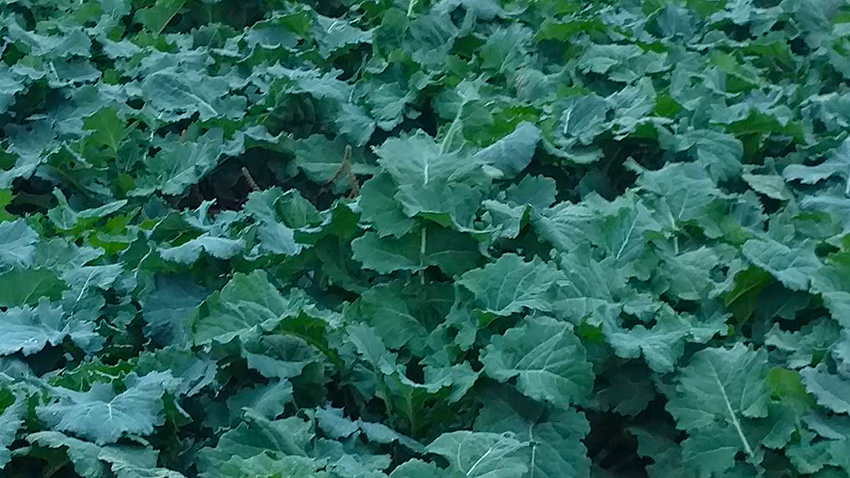
Row spacing at 20 inch in early November at Hugoton. Hornet.
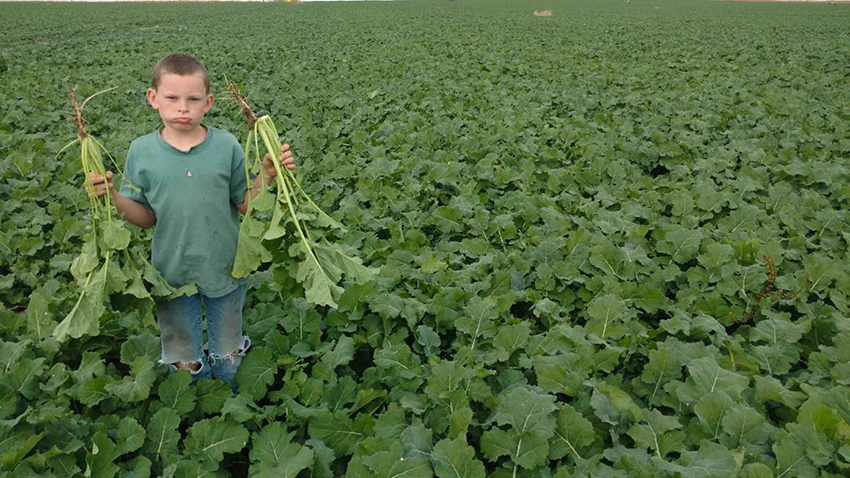
A great SW Kansas fall start and fall cover for winter at Rattlerís
Corner, Hornet Variety from Rubisco.
The 20 inch planter spacing shown with Hornet as Max McClure becomes
a Canola farmerís son.
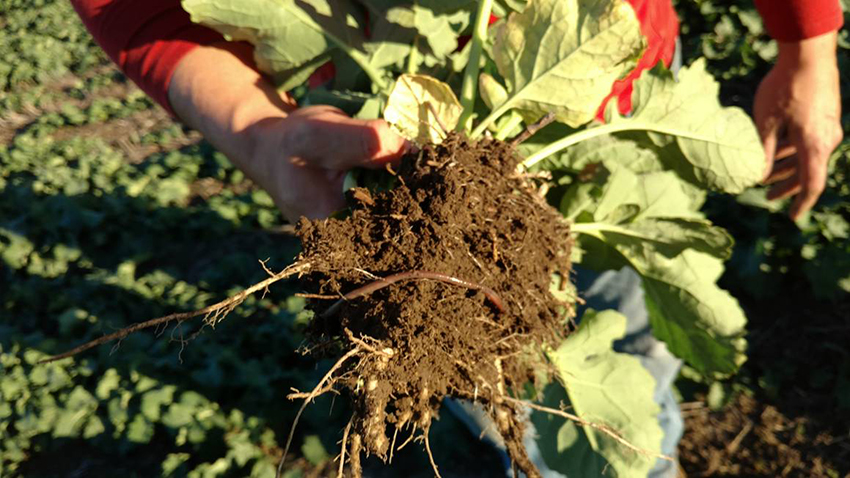
Winter Canola in the PNW is a winter harbor for earthworm activity
at St.John, Washington.
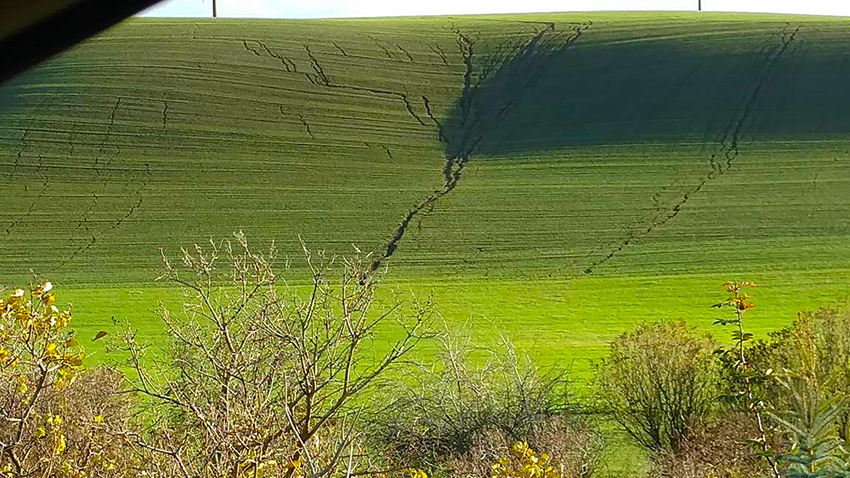
Tremendous erosion year after year from Winter Wheat at Col.,
Washington, November 2016.
Most of the erosion is coming from Soft White Winter Wheat in the
rotation. Many producers cannot master the power of No-tillage
farming.
Much of the severe erosion occurs in the months of May thru July in
big cloudbursts from storms formed up between the Blue Mountains and
Bitterroot range.
These winter wheat producers are within 15 miles of two land grant
universities and 100 miles of a Viterra Crushing plant and large
dairy operations of the Columbia Basin.
http://www.pacificcoastcanola.com/
The dryland winter wheat producers are raising the wrong crop.
The low rainfall dryland production areas of the upper Columbia
basin fight wind erosion every year. The closure of Interstate 90 is
caused by blowing soil from tillage fields. Fatal deaths on I-84 at
Pendleton have occurred.
Winter wheat producers are destroying the land with tillage systems
and short cut approaches. High horsepower tractors up to 620 hp with
40 foot implements are set up for shank tillage to place fertilizer.
The fertilizer applications masks the yield potential lost from all
of the erosion.
Winter Canola requires talented producers with a tooling upgrade to
Seed Row Saturation, (water injection), electric drive, vacuum
Planters at 30 inch spacing with row cleaners.
Another key tool is the TC Mustang Tool bars with side dressing
nutrient management TAPPS formulators on 15 inch band spacing with
VRT Site Specific techniques.
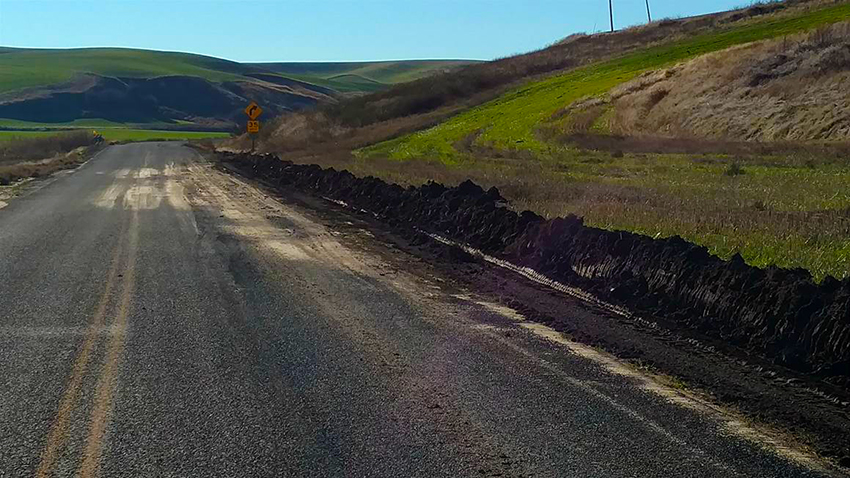
Another example of summer fallow winter wheat production with
tremendous soil loss. Unfortunately a common occurrence and the
calendar says 2017.
Sunset, Washington, Palouse Rock Lake Conservation District has a
challenge still after 30 years of No-tillage efforts.
A very erosive area that requires a complete change in cropping.
New tooling is required. Horsch Planters and Exactrix Tool Bars soon
to be on the scene.
Winter Canola holds the soil and stops wind erosion in an adjoining
field at Hugoton, KS.
Letís do some budgeting.
Canola is $7.20 per bushel at Goodland KS, April 7, 17.
A 40 bushel winter canola crop is in the makings at Hugoton, KS on
dryland acres in Chemfallow. In fact it should be insured for hail
as the crop is very good. The projected Gross Income is at $288 per
acre. The crop should also have a good rotational advantage on the
center pivots.
Winter Wheat at $3.10 per bushel is priced at Elkhart KS. A 15
bushel winter wheat crop is planned on a mechanical fallow dryland
field adjoin a good winter canola field. The winter wheat has a 30
bushel crop insurance guarantee. About $93.00 per acre is the
guarantee. With $25.00 of multi-peril and hail insurance cost.

TAPPS formulator. Mustang tool bar. 15 inch bands designed for
side dressing 30 inch rows of Winter Canola.
That means a good net return for producers using Exactrix TAPPS at
40 lbs. N, 10 pounds P and 15 pounds S with .5 lb AZN at about
$30.00 per acre in 2017 side dressed in April.
Seed cost with the planter is about $10.00 per acre. The cost to
haul water for SRS, Seed Row Saturation, is about $2.00 per acre.
The planter investment costs are increases about $40,000 with the
various changes to meters of Deere 1710 and the 3,000 gallon water
injection cart and associated water irrigation works.
The winter wheat could not be side dressed with the Exactrix P-51C
Mustang openers applying TAPPS in some areas since the stand was
very poor.
Seed cost for Winter wheat is about $10 certified seed. Insurance
cost for dryland winter wheat is not available for multi-peril.
Insurance costs for winter canola hail damage can be calculated for
a $150 per acre gross at $13. 50 per acre to cover the bets.
Seed cost for 50,000 Canola plants is about $10.00 to $12.00 per
acre with a good singulation planter at 50,000 to 60,000 population.
There is no multi-peril insurance available for dryland Winter
Canola in South Western Kansas. There is for irrigated production at
$12.74 per acre and $13.50 per $150 of income for hail insurance.
A properly managed fertilized winter wheat crop will produce about
$93 of gross with of cash outlay costs of about $65.00 to $75.00 per
acre.

Winter Canola Side dressed in February at Talmage, KS.
A properly managed fertilized winter canola crop insured for hail
and protected with insecticide will produce about $288 of income
with cash outlay of $90 to $120 per acre with delivery to Goodland.
So just to return the cash outlays to raise the two crops. The
Winter Canola has about $200 left over to cover land costs,
machinery payments, and Labor.
The harvest will occur earlier than winter wheat with a good chance
for a second crop under a pivot.
A formal budget is required to show actual costs for each operation.
Therefore we propose to make a formal budget of winter wheat vs.
winter canola. About June 30, 17 we should be able to put together a
good budget for the two crops.
Winter Canola has the potential to produce well above breakeven for
SW Kansas producers. Winter Wheat remains a money loosing crop.
Winter Canola has a large market potential for food grade oil and
Bio-Diesel oil. Wheat is very difficult to market due to a large
supply and it is common crop around the world.
Winter Canola has several other advantages in weed control and
breeding.

The heart of the planter. Delivering seed with an electric drive
vacuum meter for a 99% stand in 4 days.
Also adjusts for turning on steep slopes and keeps the turning CV
very low.

SRS or water injection is possible with large scale planters from
Horsch.

A tillage pivot corner. No SRS here. Needs a RR Winter Canola
variety.
Twin Row 30, 15 inch average spacing with
Deere Planter at Triple G Partners at Garden City. September 2017,
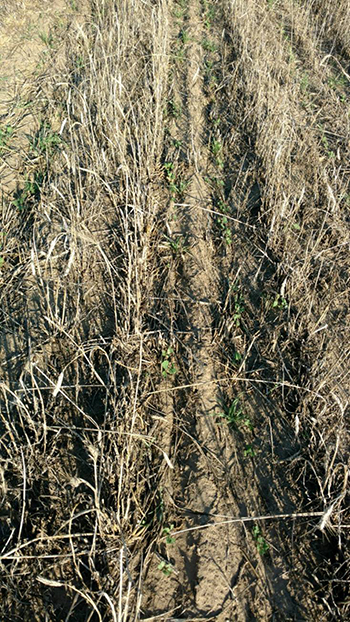
No-Tillage Triticale,Green Chop is planted with a Twin Row planter
to Winter Canola.
Twin Row Canola in Winter Triticale stubble in September, 16.
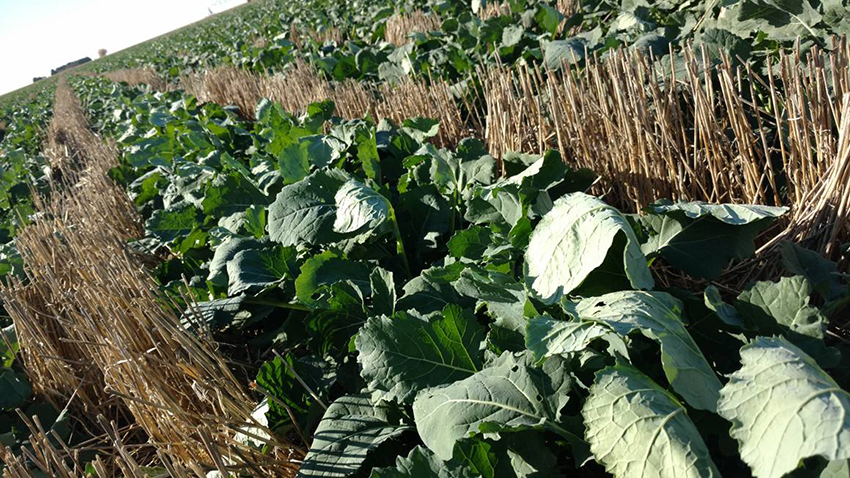
Winter Canola and Winter Wheat under irrigation at Goodland, KS. Big
money in Winter Canola following a 90 bushel TAPPS Winter Wheat
crop.
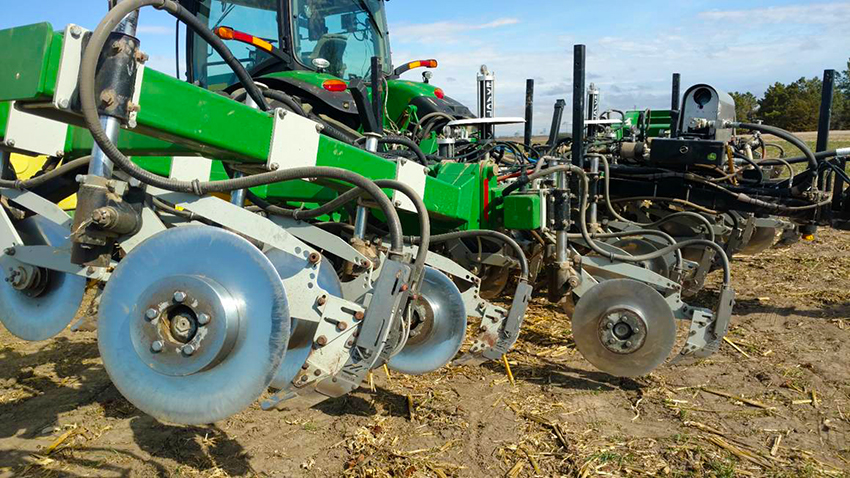
Applying nutrients into growing Winter Canola in the late fall or
late winter raises yield potential and reduces costs and risk of
winter kill.

Sometimes it is difficult to see what the problem is. We must be
raising the wrong crop.
|



















